Blockchain and Fog Based Architecture for Internet of Everything in Smart Cities
Abstract
1. Introduction
- Security: The security in the smart-cities concerned with cyber-security and physical security. In this article, the protection of data from attacks, computing infrastructure, and network are performed using Blockchain technology.
- Caching: Low-latency is one of the vital aspects of smart-city. To achieve this, caching is used to store more frequent data at different locations in a network. Caching also helps to reduce network congestion by avoiding the flow of repeated data on the network. Fog computing with caching enables a variety of applications in smart cities.
- Scalability: This enables elastic services in Fog computing in order to provide the Quality of Service (QoS). Dew computing concepts is applied in the proposed BFAN architecture to provide a fast and scalable cloud-like environment near to the IoE devices.
- Sustainability: The energy-efficient frameworks is the current requirement for smart cities using renewable energy sources. The sustainability aim is to reduce carbon footprints. Nowadays, brown sources produce more than 80% of the energy used in data-centers [7,8]. Therefore, we consider sustainability as a major concern in the article. The proposed BFAN framework helps to reduce the carbon footprint, increase the profit and hardware reliability.
- Context-awareness: An ability to obtains the node locations and information of the environment is called context-awareness. The proposed BFAN framework is context-aware and considers the environment param and node locations to choose the appropriate mode of communication. This add more meaning to the current state-of-the-art for energy efficiency and services of smart cities.
- We have devised a smart city architecture with Blockchain and Fog Computing for every device.
- The resource provisioning model has been presented for FN-to-FN, devices-to-FN and device-devices components.
- The real dataset has been used to evaluate the performance of our proposed BFAN model in various types of communication.
2. Related Work
3. Overview of Smart City Model
4. Blockchain and Fog Based Architecture
4.1. Fog Node Layer
4.2. Internet of Everything Layer
4.3. Blockchain for IoE
4.4. Data Transfer
- The communication between the local devices with sensing and processing capability is known as primary or inter primary communication. These devices can be sensors, laptops, touch-screen devices and computers used for P2P communications. Wi-Fi is used to communicate between IoE devices, where the distance is medium. The inter primary communication takes place with ZigBee and Bluetooth, while the short distance uses TCP/IP medium for inter primary communications.
- The communication between dew computing and Fog Nodes takes place with wireless or wired media. The optic fiber, CAT-5/6 is used for TCP/IP for end-to-end connection.
5. Experiment Evaluation
5.1. Experiment Setup
5.2. Experiment Results
5.2.1. Energy-Consumption
5.2.2. Latency
6. Research Directions
7. Conclusions
Author Contributions
Funding
Conflicts of Interest
References
- Neirotti, P.; De Marco, A.; Cagliano, A.C.; Mangano, G.; Scorrano, F. Current trends in Smart City initiatives: Some stylised facts. Cities 2014, 38, 25–36. [Google Scholar] [CrossRef]
- Vlacheas, P.; Giaffreda, R.; Stavroulaki, V.; Kelaidonis, D.; Foteinos, V.; Poulios, G.; Demestichas, P.; Somov, A.; Biswas, A.R.; Moessner, K. Enabling smart cities through a cognitive management framework for the internet of things. IEEE Commun. Mag. 2013, 51, 102–111. [Google Scholar] [CrossRef]
- Gupta, H.; Vahid Dastjerdi, A.; Ghosh, S.K.; Buyya, R. iFogSim: A toolkit for modeling and simulation of resource management techniques in the Internet of Things, Edge and Fog computing environments. Softw. Pract. Exp. 2017, 47, 1275–1296. [Google Scholar] [CrossRef]
- Bellavista, P.; Zanni, A. Feasibility of fog computing deployment based on docker containerization over raspberrypi. In Proceedings of the 18th International Conference on Distributed Computing and Networking; ACM: New York, NY, USA, 2017; p. 16. [Google Scholar]
- Solutions, C.F.C. Unleash the Power of the Internet of Things; Cisco Systems Inc.: San Jose, CA, USA, 2015. [Google Scholar]
- Herbert, Z. Why Blockchains Are the Future of Cloud Storage. Available online: https://blog.sia.tech/why-blockchains-are-the-future-of-cloud-storage-91f0b48cfce9 (accessed on 22 March 2020).
- Li, W.; Yang, T.; Delicato, F.C.; Pires, P.F.; Tari, Z.; Khan, S.U.; Zomaya, A.Y. On enabling sustainable edge computing with renewable energy resources. IEEE Commun. Mag. 2018, 56, 94–101. [Google Scholar] [CrossRef]
- Gill, S.S.; Buyya, R. A taxonomy and future directions for sustainable cloud computing: 360 degree view. ACM Comput. Surv. CSUR 2018, 51, 1–33. [Google Scholar] [CrossRef]
- Zanella, A.; Bui, N.; Castellani, A.; Vangelista, L.; Zorzi, M. Internet of things for smart cities. IEEE Internet Things J. 2014, 1, 22–32. [Google Scholar] [CrossRef]
- Giang, N.K.; Lea, R.; Blackstock, M.; Leung, V. On building smart city IoT applications: A coordination-based perspective. In Proceedings of the 2nd International Workshop on Smart; ACM: New York, NY, USA, 2016; p. 7. [Google Scholar]
- Jin, J.; Gubbi, J.; Marusic, S.; Palaniswami, M. An information framework for creating a smart city through internet of things. IEEE Internet Things J. 2014, 1, 112–121. [Google Scholar] [CrossRef]
- Bruneo, D.; Distefano, S.; Longo, F.; Merlino, G.; Puliafito, A.; D’Amico, V.; Sapienza, M.; Torrisi, G. Stack4Things as a fog computing platform for Smart City applications. In Proceedings of the 2016 IEEE Conference on Computer Communications Workshops (INFOCOM WKSHPS), San Francisco, CA, USA, 10–15 April 2016; pp. 848–853. [Google Scholar]
- Dubey, H.; Yang, J.; Constant, N.; Amiri, A.M.; Yang, Q.; Makodiya, K. Fog data: Enhancing telehealth big data through fog computing. In Proceedings of the ASE Bigdata & Socialinformatics 2015; ACM: New York, NY, USA, 2015; p. 14. [Google Scholar]
- Giang, N.K.; Leung, V.C.; Lea, R. On developing smart transportation applications in fog computing paradigm. In Proceedings of the 6th ACM Symposium on Development and Analysis of Intelligent Vehicular Networks and Applications, Valletta, Malta, 13–17 November 2016; pp. 91–98. [Google Scholar]
- Premsankar, G.; Ghaddar, B.; Di Francesco, M.; Verago, R. Efficient placement of edge computing devices for vehicular applications in smart cities. In Proceedings of the IEEE NOMS 2018-2018 IEEE/IFIP Network Operations and Management Symposium, Taipei, Taiwan, 23–27 April 2018; pp. 1–9. [Google Scholar]
- Fernández-Caramés, T.M.; Fraga-Lamas, P.; Suárez-Albela, M.; Vilar-Montesinos, M. A fog computing and cloudlet based augmented reality system for the industry 4.0 shipyard. Sensors 2018, 18, 1798. [Google Scholar] [CrossRef] [PubMed]
- Schneider, M.; Rambach, J.; Stricker, D. Augmented reality based on edge computing using the example of remote live support. In Proceedings of the 2017 IEEE International Conference on Industrial Technology (ICIT), Toronto, ON, Canada, 22–25 March 2017; pp. 1277–1282. [Google Scholar]
- Muhammad, G.; Alhamid, M.F.; Alsulaiman, M.; Gupta, B. Edge computing with cloud for voice disorder assessment and treatment. IEEE Commun. Mag. 2018, 56, 60–65. [Google Scholar] [CrossRef]
- Gia, T.N.; Jiang, M.; Sarker, V.K.; Rahmani, A.M.; Westerlund, T.; Liljeberg, P.; Tenhunen, H. Low-cost fog-assisted health-care IoT system with energy-efficient sensor nodes. In Proceedings of the IEEE 2017 13th International Wireless Communications and Mobile Computing Conference (IWCMC), Valencia, Spain, 26–30 June 2017; pp. 1765–1770. [Google Scholar]
- Kumar, N.; Zeadally, S.; Rodrigues, J.J. Vehicular delay-tolerant networks for smart grid data management using mobile edge computing. IEEE Commun. Mag. 2016, 54, 60–66. [Google Scholar] [CrossRef]
- Okay, F.Y.; Ozdemir, S. A fog computing based smart grid model. In Proceedings of the IEEE 2016 International Symposium on Networks, Computers and Communications (ISNCC), Hammamet, Tunisia, 11–13 May 2016; pp. 1–6. [Google Scholar]
- Ferrández-Pastor, F.J.; García-Chamizo, J.M.; Nieto-Hidalgo, M.; Mora-Martínez, J. Precision agriculture design method using a distributed computing architecture on internet of things context. Sensors 2018, 18, 1731. [Google Scholar] [CrossRef] [PubMed]
- Zamora-Izquierdo, M.A.; Santa, J.; Martínez, J.A.; Martínez, V.; Skarmeta, A.F. Smart farming IoT platform based on edge and cloud computing. Biosyst. Eng. 2019, 177, 4–17. [Google Scholar] [CrossRef]
- Vallati, C.; Virdis, A.; Mingozzi, E.; Stea, G. Mobile-edge computing come home connecting things in future smart homes using LTE device-to-device communications. IEEE Consum. Electron. Mag. 2016, 5, 77–83. [Google Scholar] [CrossRef]
- Premsankar, G.; Di Francesco, M.; Taleb, T. Edge computing for the Internet of Things: A case study. IEEE Int. Things J. 2018, 5, 1275–1284. [Google Scholar] [CrossRef]
- Rameshwar, R.; Solanki, A.; Nayyar, A.; Mahapatra, B. Green and Smart Buildings: A Key to Sustainable Global Solutions. In Green Building Management and Smart Automation; IGI Global: Hershey, PA, USA, 2020; pp. 146–163. [Google Scholar]
- Krishnamurthi, R.; Nayyar, A.; Solanki, A. Innovation Opportunities through Internet of Things (IoT) for Smart Cities. In Green and Smart Technologies for Smart Cities; CRC Press: Boca Raton, FL, USA, 2019; pp. 261–292. [Google Scholar]
- Das, S.; Nayyar, A. Innovative Ideas to Manage Urban Traffic Congestion in Cognitive Cities. In Driving the Development, Management, and Sustainability of Cognitive Cities; IGI Global: Hershey, PA, USA, 2019; pp. 139–162. [Google Scholar]
- Nayyar, A.; Jain, R.; Mahapatra, B.; Singh, A. Cyber Security Challenges for Smart Cities. In Driving the Development, Management, and Sustainability of Cognitive Cities; IGI Global: Hershey, PA, USA, 2019; pp. 27–54. [Google Scholar]
- Solanki, A.; Nayyar, A. Green internet of things (G-IoT): ICT technologies, principles, applications, projects, and challenges. In Handbook of Research on Big Data and the IoT; IGI Global: Hershey, PA, USA, 2019; pp. 379–405. [Google Scholar]
- Nayyar, A. Handbook of Cloud Computing: Basic to Advance Research on the Concepts and Design of Cloud Computing; BPB Publications: New Delhi, India, 2019. [Google Scholar]
- Singh, S.P.; Nayyar, A.; Kaur, H.; Singla, A. Dynamic task scheduling using balanced VM allocation policy for fog computing platforms. Scalab. Comput. Pract. Exp. 2019, 20, 433–456. [Google Scholar] [CrossRef]
- Kaur, A.; Gupta, P.; Singh, M.; Nayyar, A. Data placement in era of cloud computing: A survey, taxonomy and open research issues. Scalab. Comput. Pract. Exp. 2019, 20, 377–398. [Google Scholar] [CrossRef]
- Singh, S.P.; Nayyar, A.; Kumar, R.; Sharma, A. Fog computing: From architecture to edge computing and big data processing. J. Supercomput. 2019, 75, 2070–2105. [Google Scholar] [CrossRef]
- Naranjo, P.G.V.; Shojafar, M.; Mostafaei, H.; Pooranian, Z.; Baccarelli, E. P-SEP: A prolong stable election routing algorithm for energy-limited heterogeneous fog-supported wireless sensor networks. J. Supercomput. 2017, 73, 733–755. [Google Scholar] [CrossRef]
- Li, Y.; Sun, L.; Wang, W. Exploring device-to-device communication for mobile cloud computing. In Proceedings of the 2014 IEEE International Conference on Communications (ICC), Sydney, NSW, Australia, 10–14 June 2014; pp. 2239–2244. [Google Scholar]
- Jain, R.; Jain, N.; Nayyar, A. Security and Privacy in Social Networks: Data and Structural Anonymity. In Handbook of Computer Networks and Cyber Security; Springer: Berlin/Heidelberg, Germany, 2020; pp. 265–293. [Google Scholar]
- Kumar, A.; Sangwan, S.R.; Nayyar, A. Multimedia social big data: Mining. In Multimedia Big Data Computing for IoT Applications; Springer: Berlin/Heidelberg, Germany, 2020; pp. 289–321. [Google Scholar]
- Deep, G.; Mohana, R.; Nayyar, A.; Sanjeevikumar, P.; Hossain, E. Authentication Protocol for Cloud Databases Using Blockchain Mechanism. Sensors 2019, 19, 4444. [Google Scholar] [CrossRef] [PubMed]
- Naranjo, P.G.V.; Pooranian, Z.; Shojafar, M.; Conti, M.; Buyya, R. FOCAN: A Fog-supported smart city network architecture for management of applications in the Internet of Everything environments. J. Parallel Distrib. Comput. 2019, 132, 274–283. [Google Scholar] [CrossRef]
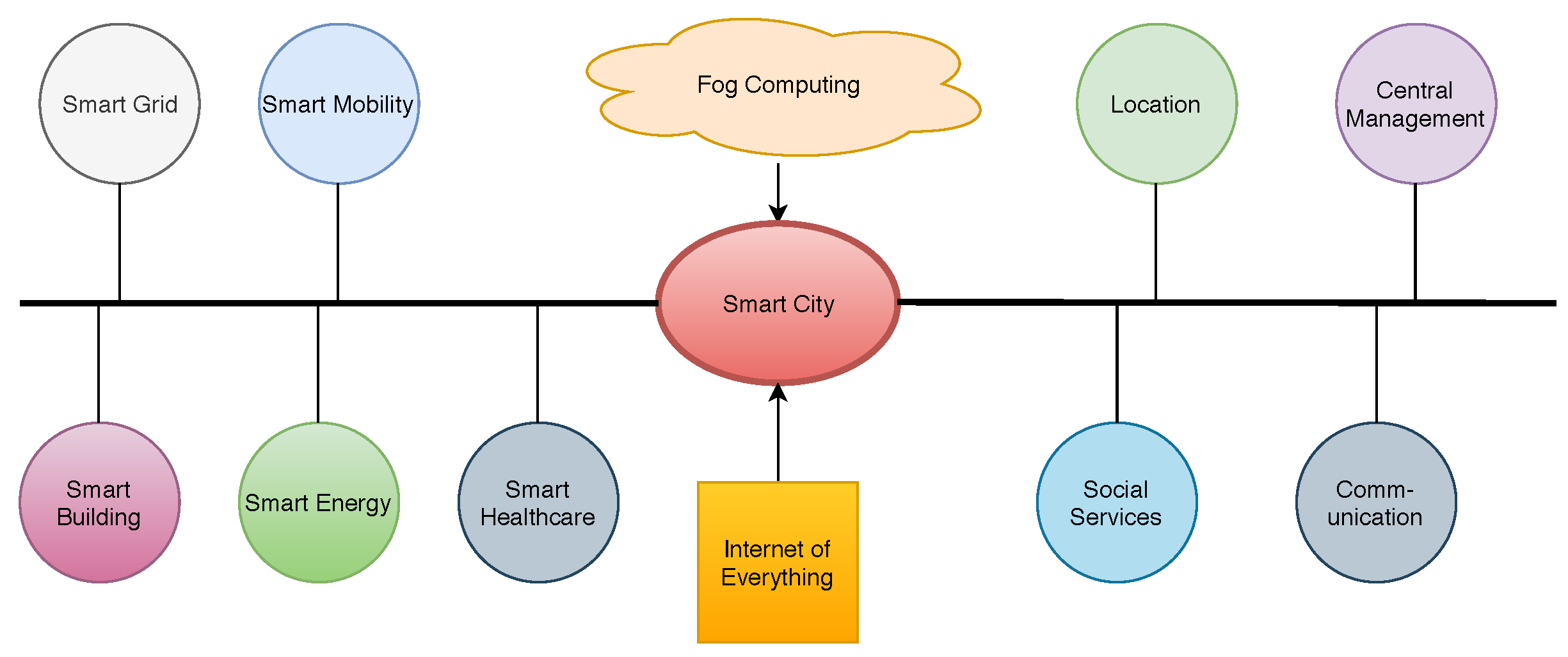
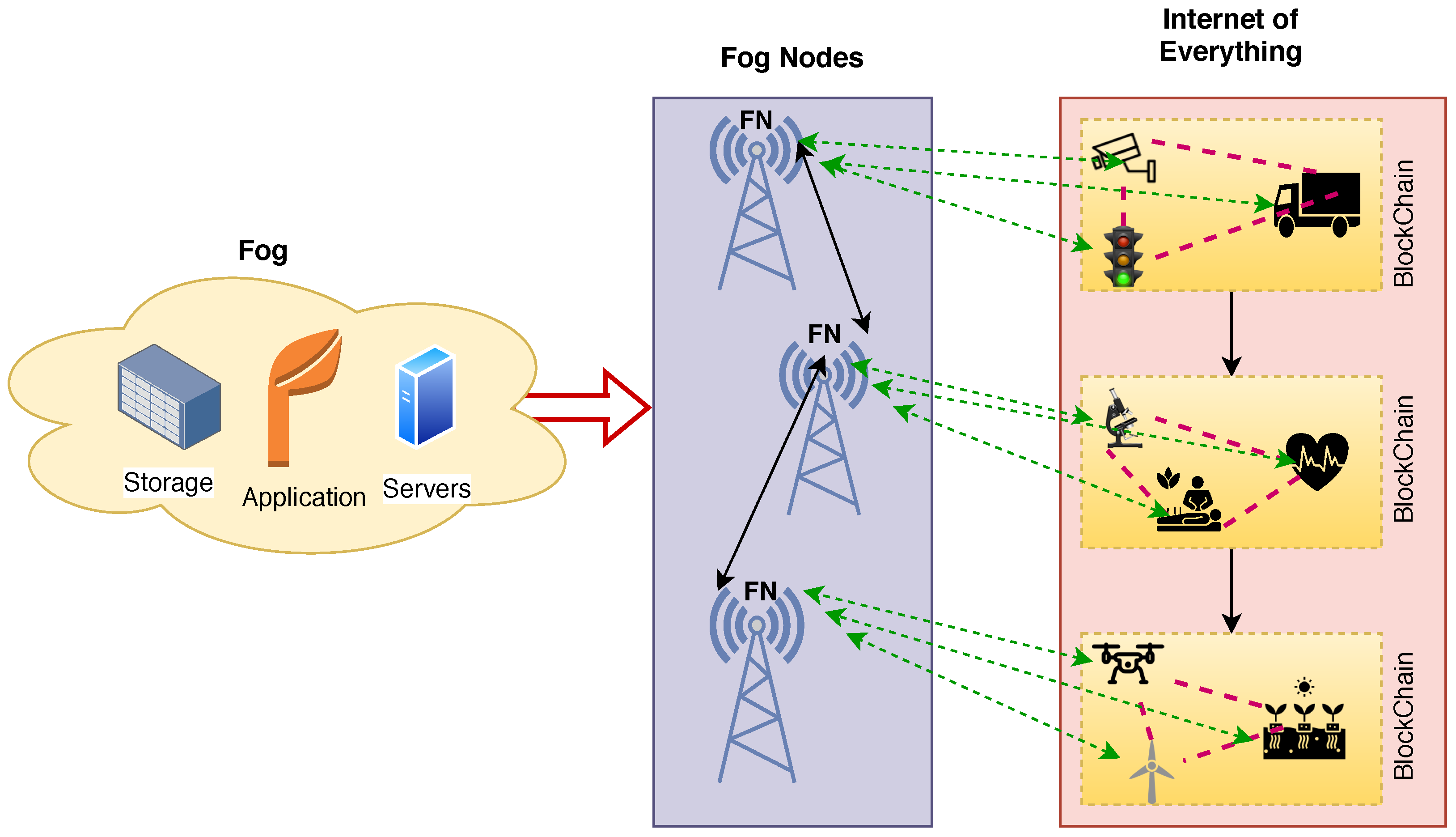
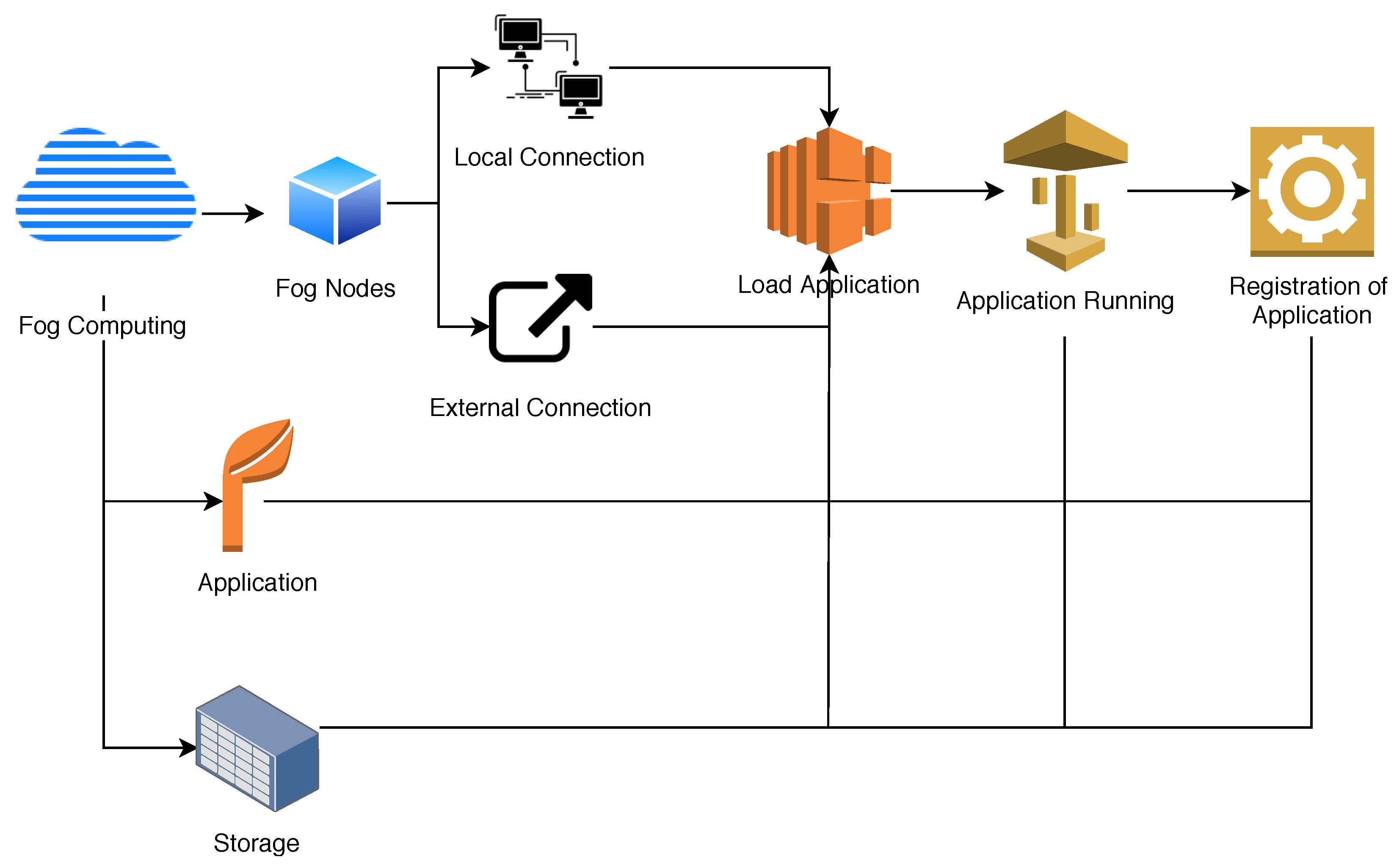
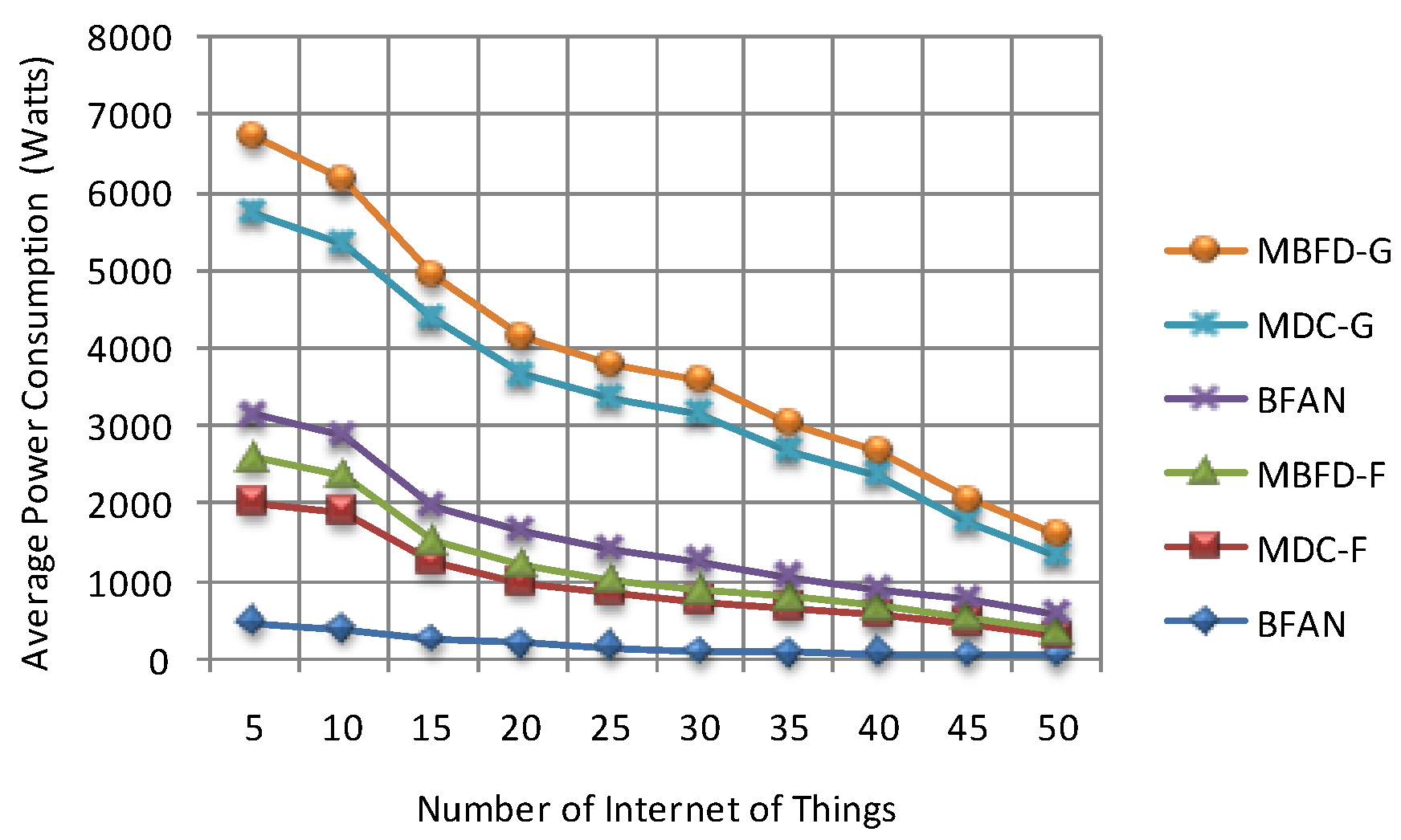
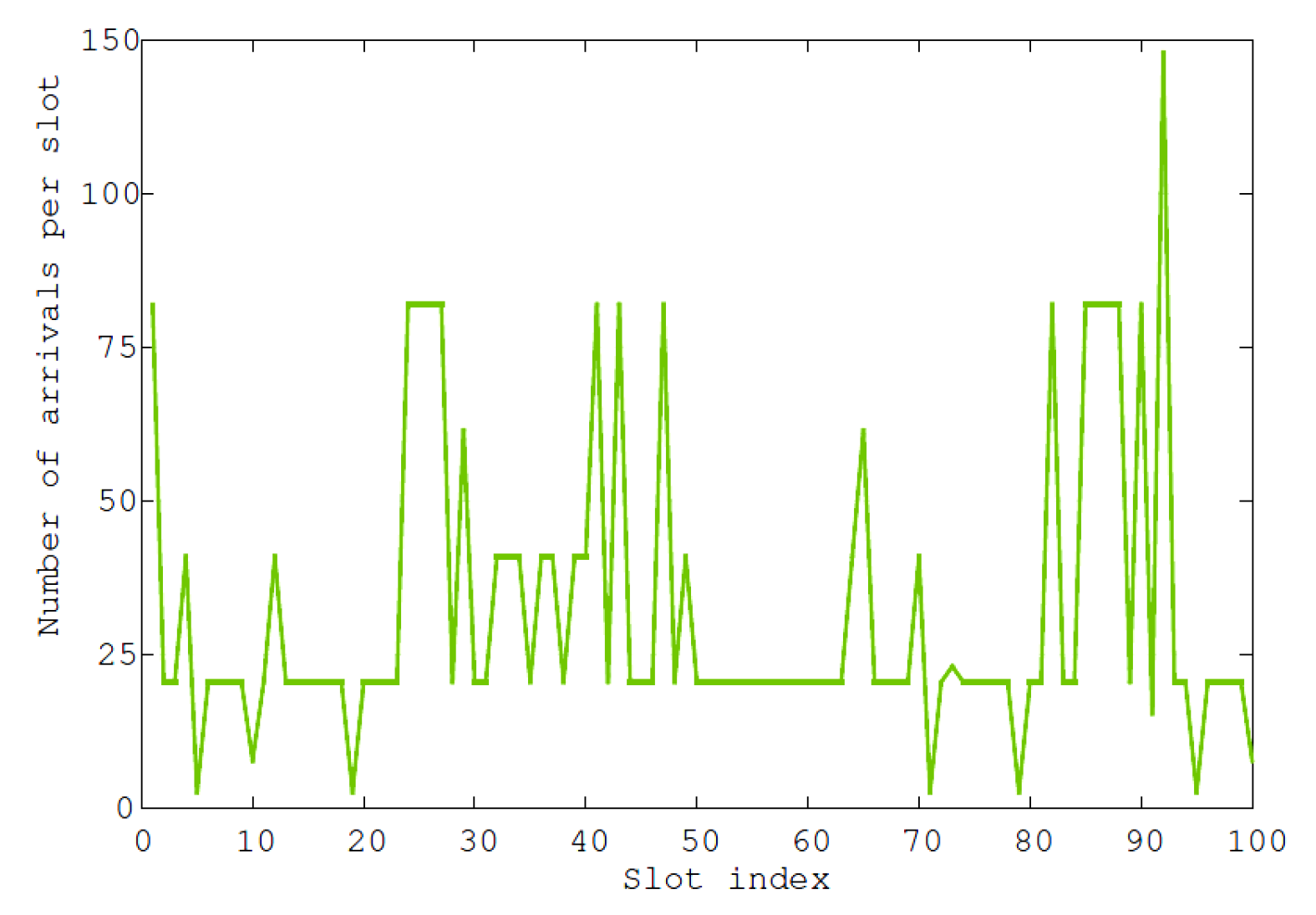
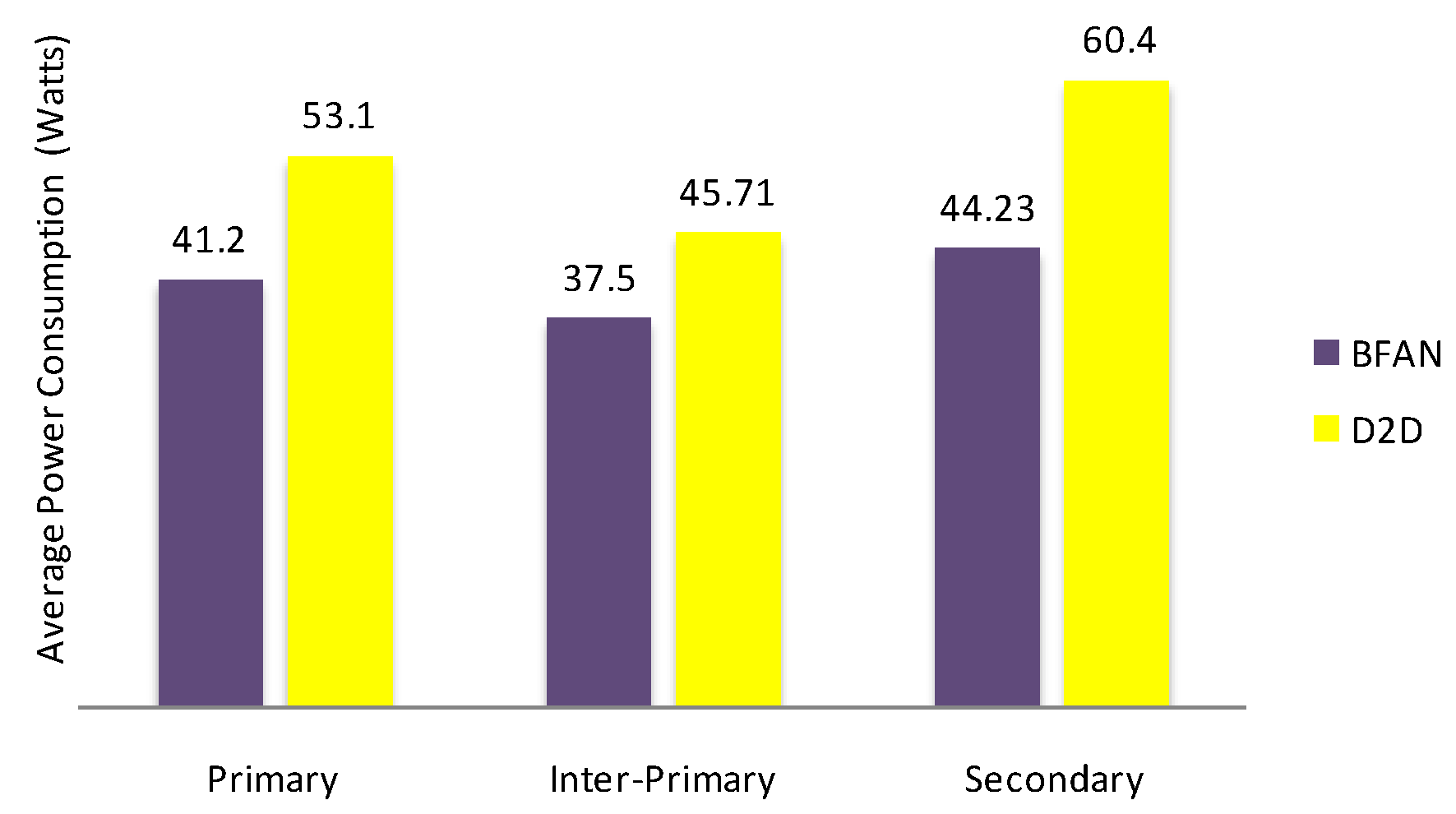
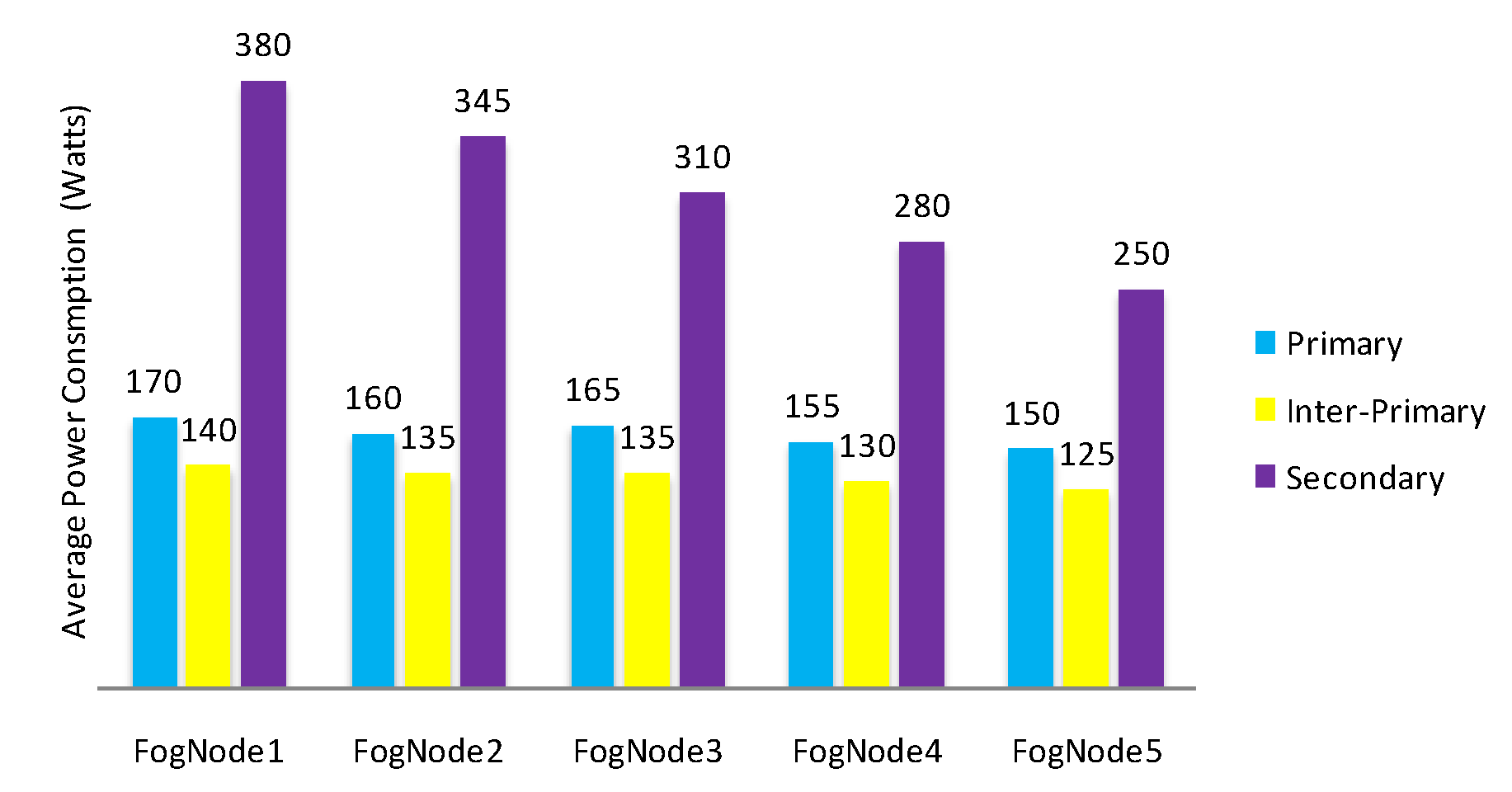

| Reference | Application | Security | Caching | Sustainability | Scalability | Context-Awareness |
|---|---|---|---|---|---|---|
| [14] | smart- transportation | ✗ | ✗ | ✗ | ✓ | ✓ |
| [15] | smart- transportation | ✗ | ✗ | ✓ | ✗ | ✓ |
| [16] | Augmented reality | ✗ | ✓ | ✗ | ✓ | ✗ |
| [17] | Augmented reality | ✗ | ✗ | ✗ | ✗ | ✗ |
| [18] | Smart-healthcare | ✓ | ✓ | ✗ | ✗ | ✓ |
| [19] | Smart-healthcare | ✓ | ✗ | ✓ | ✗ | ✓ |
| [20] | Smart-grid | ✓ | ✗ | ✓ | ✗ | ✗ |
| [21] | Smart-grid | ✗ | ✗ | ✓ | ✓ | ✓ |
| [22] | Smart-farming | ✓ | ✗ | ✓ | ✓ | ✓ |
| [23] | Smart-farming | ✗ | ✗ | ✓ | ✗ | ✗ |
| [24] | Smart-buildings | ✓ | ✗ | ✗ | ✓ | ✓ |
| [25] | Smart-gaming | ✗ | ✗ | ✗ | ✗ | ✗ |
| Type | Architecture | QoS | Technology | Access Medium | Latency | Bandwidth | Mobility | Storage | Delay |
|---|---|---|---|---|---|---|---|---|---|
| Primary | centralized | high | WiFi/4G /5G | fixed/wireless | low | medium | yes | yes | very low |
| Inter- primary | centralized | high | Zigbee/Bluetooth/WiFi | fixed/wireless | very low | high | yes | no | very low |
| Secondary | distributed | very high | 5G/4G /WiFi | fixed | low | low | no | yes | low |
© 2020 by the authors. Licensee MDPI, Basel, Switzerland. This article is an open access article distributed under the terms and conditions of the Creative Commons Attribution (CC BY) license (http://creativecommons.org/licenses/by/4.0/).
Share and Cite
Singh, P.; Nayyar, A.; Kaur, A.; Ghosh, U. Blockchain and Fog Based Architecture for Internet of Everything in Smart Cities. Future Internet 2020, 12, 61. https://doi.org/10.3390/fi12040061
Singh P, Nayyar A, Kaur A, Ghosh U. Blockchain and Fog Based Architecture for Internet of Everything in Smart Cities. Future Internet. 2020; 12(4):61. https://doi.org/10.3390/fi12040061
Chicago/Turabian StyleSingh, Parminder, Anand Nayyar, Avinash Kaur, and Uttam Ghosh. 2020. "Blockchain and Fog Based Architecture for Internet of Everything in Smart Cities" Future Internet 12, no. 4: 61. https://doi.org/10.3390/fi12040061
APA StyleSingh, P., Nayyar, A., Kaur, A., & Ghosh, U. (2020). Blockchain and Fog Based Architecture for Internet of Everything in Smart Cities. Future Internet, 12(4), 61. https://doi.org/10.3390/fi12040061







